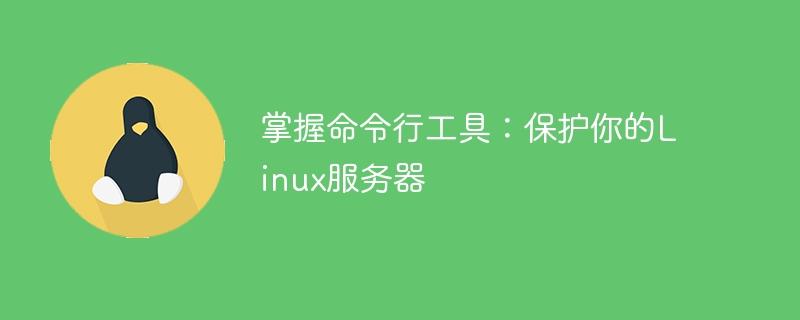
Master the Command Line Tools: Protect Your Linux Server
As a modern server management tool, the Linux command line interface (CLI) provides rich functionality and flexibility properties, allowing administrators to manage and protect servers more efficiently. In this article, we will introduce some commonly used command line tools to help you better protect your Linux server.
- Firewall: The firewall is the first line of defense for server security. By configuring a firewall, you can restrict access to your server and allow communication only to trusted IP addresses or ports. Linux provides a variety of firewall tools, such as iptables and ufw. Using command line tools, you can customize your firewall rules and monitor network traffic on your server.
- SSH (Secure Shell): SSH is a secure remote login protocol that uses an encrypted transmission channel to protect the security of user login and data transmission. Through the command line tool ssh, you can log in to the server remotely and execute commands and manage files in a secure environment. To strengthen server security, you should disable SSH logins for the root user, use key authentication instead of password logins, and set complex password policies.
- SELinux (Security-Enhanced Linux): SELinux is a very powerful security enhancement system that can provide higher security for Linux servers. It protects the system's core resources and sensitive data through access control policies and mandatory access control mechanisms. Using the command line tool semanage, you can manage SELinux-related policies and configurations.
- Log management: Logs are an important tool for server security monitoring and troubleshooting. Through command line tools, you can view and analyze server log files to understand system operation and potential security threats. Common command line tools include tail, grep and awk. You can use these tools to search, filter, and parse log files to detect anomalies and intrusions in a timely manner.
- File and directory permissions: Correct file and directory permission settings are important measures to protect server security. Through the command line tools chmod and chown, you can set the owner, group and permissions of files and directories. Properly configured permissions can prevent unauthorized users from accessing and modifying sensitive files. At the same time, you can also use the command line tools find and grep to search and modify file permissions.
- Vulnerability Scanning and Vulnerability Remediation: Linux servers are vulnerable to various vulnerabilities. With command line tools, you can perform vulnerability scans and promptly remediate potential security vulnerabilities. Common tools include nmap, OpenVAS, Metasploit, etc. These tools can help you analyze server vulnerabilities and provide corresponding repair suggestions.
In addition to the command line tools mentioned above, Linux also provides a large number of other tools that can help you better protect the security of your server. By learning and mastering these tools, you can stay away from common security threats and respond to and repair servers in a timely manner. At the same time, in order to further improve the security of the server, it is recommended that you regularly update the operating system and software versions, and pay close attention to the latest security vulnerabilities and threat intelligence.
As network security becomes increasingly important today, protecting the security of Linux servers has become the responsibility of every system administrator. By mastering command line tools, you can better protect your server and improve server security and stability. I hope this article will help you understand and learn Linux server security!
The above is the detailed content of Master the Command Line Tools: Protect Your Linux Server. For more information, please follow other related articles on the PHP Chinese website!






